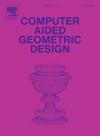3D mesh denoising is a crucial pre-processing step in many graphics applications. However, existing data-driven mesh denoising models, primarily trained on synthetic white noise, are less effective when applied to real-world meshes with the noise of complex intensities and distributions. Moreover, how to comprehensively capture information from input meshes and apply suitable denoising models for feature-preserving mesh denoising remains a critical and unresolved challenge. This paper presents a rotation-Equivariant model-based Mesh Denoising (EMD) model and a Realistic Mesh Noise Generation (RMNG) model to address these issues. Our EMD model leverages rotation-equivariant features and self-attention weights of geodesic patches for more effective feature extraction, thereby achieving SOTA denoising results. The RMNG model, based on the Generative Adversarial Networks (GANs) architecture, generates massive amounts of realistic noisy and noiseless mesh pairs data for data-driven mesh denoising model training, significantly benefiting real-world denoising tasks. To address the smooth degradation and loss of sharp edges commonly observed in captured meshes, we further introduce varying levels of Laplacian smoothing to input meshes during the paired training data generation, endowing the trained denoising model with feature recovery capabilities. Experimental results demonstrate the superior performance of our proposed method in preserving fine-grained features while removing noise on real-world captured meshes.


